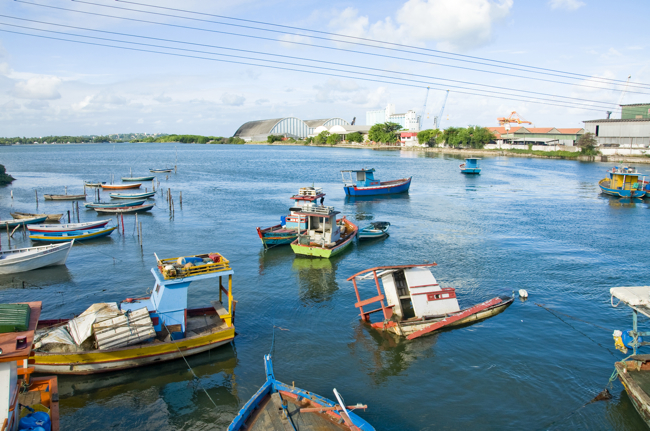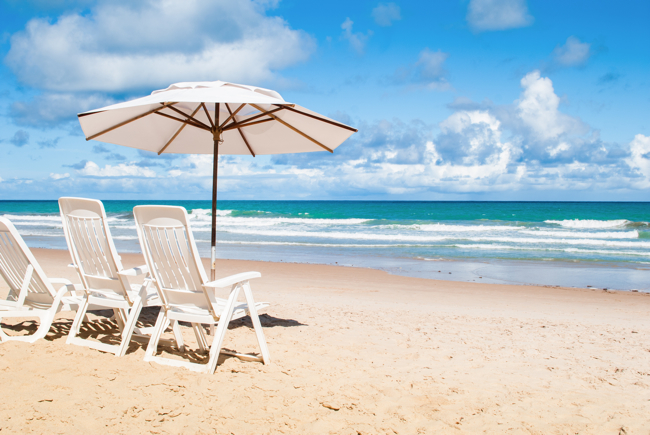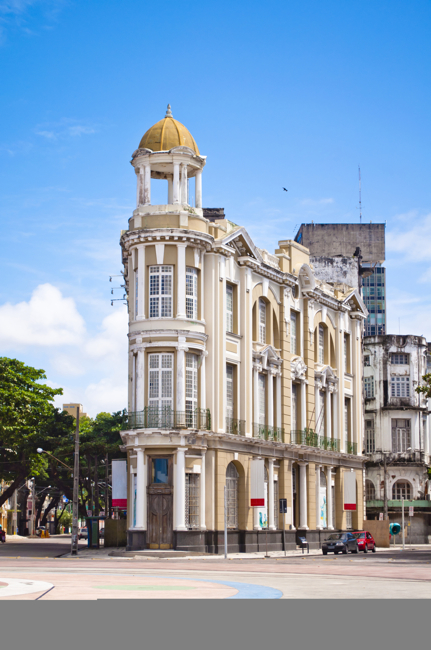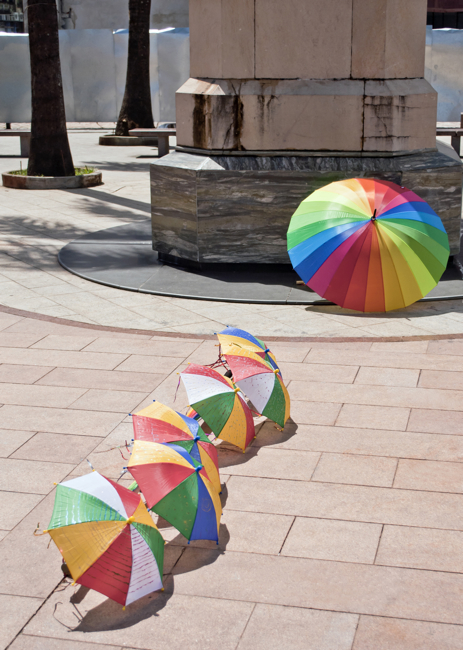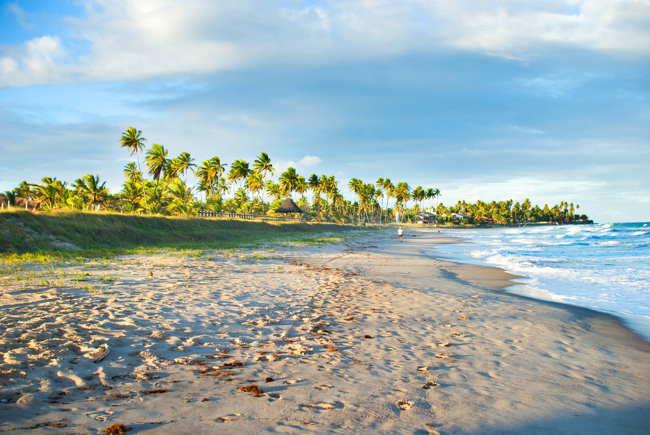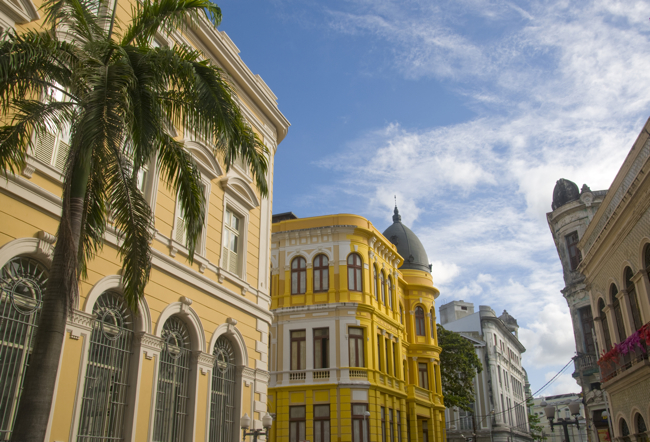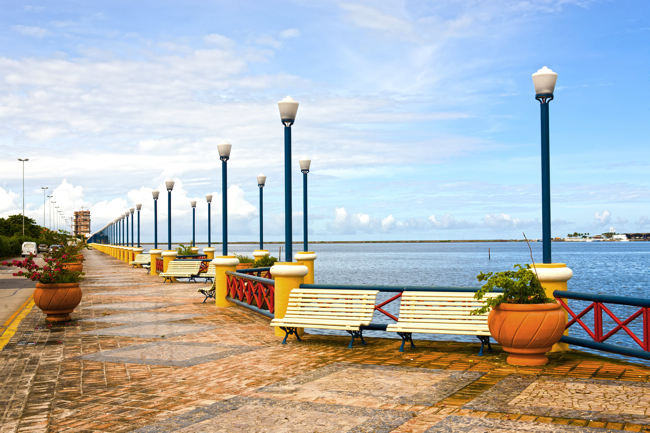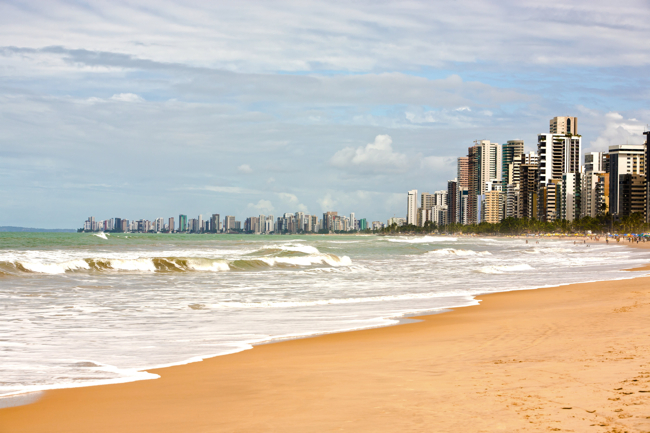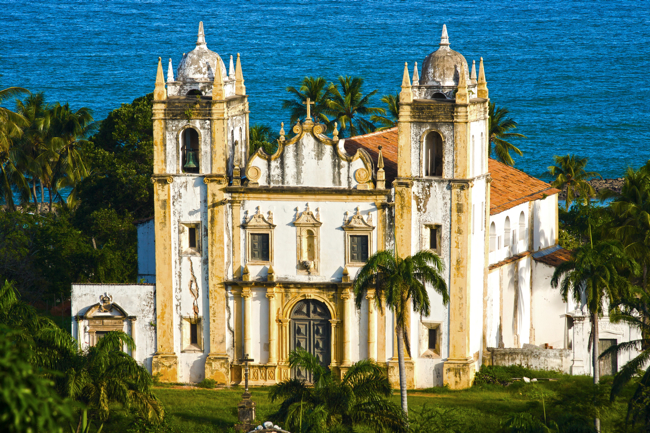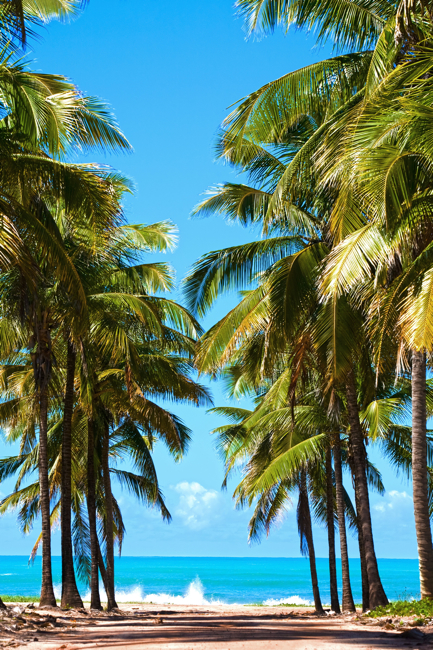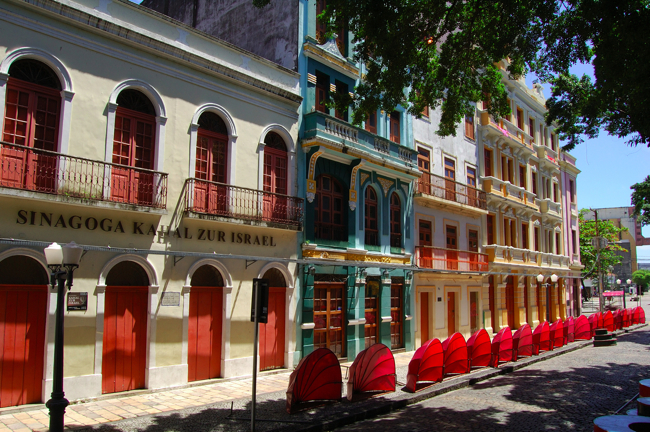Gay Recife
Recife, the Brazilian Venice
Recife, or reef in English, was mentioned for the first time in History, when, in a letter dated March 12, 1537, the Portuguese Crown donated that land to Duarte Coelho. The letter cites the location as an anchorage for ships where, later on, a village would be built. Its first name, Recife dos Navios, referred to the sandstone reefs, a marine rock formation present along the whole coast of Pernambuco state. The location was a privileged one and it wasn’t long before the Dutch noticed it: in 1630 they arrived with 56 ships and thousands of men, commanded by Diederick van Waerdenburg and Henderick Lonck. The Dutch burned Pernambuco’s Province capital Olinda to the ground, forcing its inhabitants to flee to nearby Recife, located only 2.5 miles away.
When Count Johan Maurits van Nassau-Siegen, aka “the Brazilian” arrived in Recife in January 1637, he immediately began to transform the city, building palaces, edifices, numerous bridges and beautiful gardens. Nassau, never known for having a small ego, renamed the city Mauritsstaad, after himself. Under his administration the first bridge was built in Brazil, inaugurated in February 1644. The colony flourished, for Nassau supported the development of sciences and art, pioneering studies on zoology, botany and tropical diseases. Unfortunately, his generous expenditure didn’t make him popular among the stingy Dutch, who decided to impose their own rules for the occupation, cutting expenses they saw unnecessary to begin with. Count Maurits had no intentions of submitting to the West India Company rules: he would stay if he could have it his own way, ruling the colony as he saw fit. The disagreement resulted in his return to Europe, in July 1644.
When the Portuguese colonial government finally forced the Dutch out, in 1654, the new capital of Pernambuco had 300 buildings, among them two and three family homes, the Church of the Holy Body, the Government Palace, Customs Headquarters, a prison, and also the first Synagogue built in the Americas. The first immigrant ever to set foot in Manhattan Island came from this pioneer Jewish settlement in Brazil.
Later on, in 1836, Recife would caught the attention of Charles Darwin: “the city was built on top of narrow and low sand banks, separated one from another by channels of salted water. (…) I doubt we can find anywhere in the world a natural structure with such an artificial appearance. (…) There are several kilometers of absolute straight line, all standing parallel to the coast and never distant from it, (…) a breakwater built by cyclopean hands”.
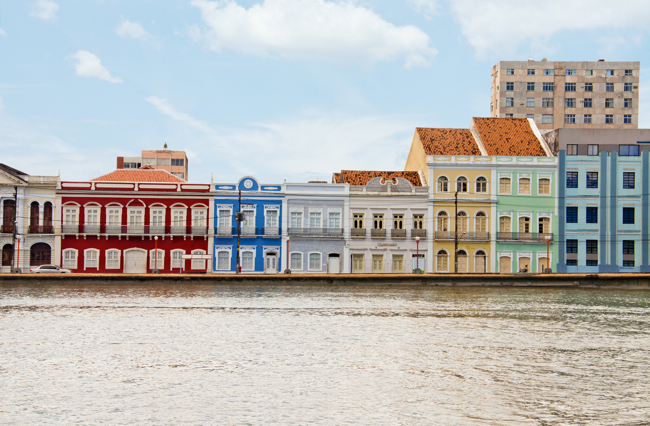 The arrival of the Portuguese Royal family in 1808, and the consequent opening of all Brazilian ports to commerce with friendly nations, deeply transformed Recife. The arrival of British capital demanded the modernization of the port, now used to export the majority of the Brazilian production of cotton and sugar cane, due to its closer location to Europe. During the 19th Century, the majority of the population leaving in what was Recife then were the poor: small merchants, fishermen, artisans and dock workers. The elite could be found in other areas, like Benfica and Boa Vista. The beginning of the 20th Century saw Recife being reformed, the original nucleus that gave birth to the city being demolished with no consideration or respect for its history. The 16th Century Church of The Holy Body, for instance, was demolished, the same cruel destiny was applied to Santo Antonio and Conceição archways, which gave passage to the pioneer Mauricio de Nassau bridge. The new Recife was built to follow the French urban ideas of the time: streets were widened, sanitation plans were created, and among the 1,180 buildings in existence then, 205 were demolished. The city reform attracted, at the beginning, the elites living elsewhere, but not for long: with more ships tracking the port came also more mariners, and with the mariners, more prostitutes. Besides, the elites of that time weren’t used to live in apartment buildings, so the interest in the new city center waned away almost as fast as it emerged. The post WWII era saw the center of Recife occupied by merchants and prostitutes, which used the buildings with no preoccupation with its conservation. Ironically, the lack of interest by the elites in the city center was the factor responsible for its architectural preservation. Later on, in 1987, a new urbanization plan was adopted, aiming at the area revitalization. Today, the 220 square kilometers of Recife is populated by more than 1.5 million people. Like other cities of the Northeast (and also Rio de Janeiro), the majority of its population is poor or very poor, the middle and upper classes representing a small minority in power.
The arrival of the Portuguese Royal family in 1808, and the consequent opening of all Brazilian ports to commerce with friendly nations, deeply transformed Recife. The arrival of British capital demanded the modernization of the port, now used to export the majority of the Brazilian production of cotton and sugar cane, due to its closer location to Europe. During the 19th Century, the majority of the population leaving in what was Recife then were the poor: small merchants, fishermen, artisans and dock workers. The elite could be found in other areas, like Benfica and Boa Vista. The beginning of the 20th Century saw Recife being reformed, the original nucleus that gave birth to the city being demolished with no consideration or respect for its history. The 16th Century Church of The Holy Body, for instance, was demolished, the same cruel destiny was applied to Santo Antonio and Conceição archways, which gave passage to the pioneer Mauricio de Nassau bridge. The new Recife was built to follow the French urban ideas of the time: streets were widened, sanitation plans were created, and among the 1,180 buildings in existence then, 205 were demolished. The city reform attracted, at the beginning, the elites living elsewhere, but not for long: with more ships tracking the port came also more mariners, and with the mariners, more prostitutes. Besides, the elites of that time weren’t used to live in apartment buildings, so the interest in the new city center waned away almost as fast as it emerged. The post WWII era saw the center of Recife occupied by merchants and prostitutes, which used the buildings with no preoccupation with its conservation. Ironically, the lack of interest by the elites in the city center was the factor responsible for its architectural preservation. Later on, in 1987, a new urbanization plan was adopted, aiming at the area revitalization. Today, the 220 square kilometers of Recife is populated by more than 1.5 million people. Like other cities of the Northeast (and also Rio de Janeiro), the majority of its population is poor or very poor, the middle and upper classes representing a small minority in power.
Nevertheless, Recife’s atmosphere is one of permanent happiness and freedom, its people are very upbeat and ready to party at all times. Considered the biggest cultural center of the northeast, and the third most important gastronomic center of the country, the Brazilian Venice offers the tourist hundreds of places to see and things to do. The gay tourist can feel home here, where there is even a famous gay clown, the first in the whole country, the 41 years old local celebrity Mauricio Santana.
Gay sports are also emphasized by the Metrópole Gaymes, created in 2004, “the first GLBTS (Gay, Lesbian, Bisexual, Transgender and Sympathizers) sports competition in Recife”. The second edition of the event took place this past January 22, in the sands of the gay section of Boa Viagem Beach, in front of Hotel Savaroni, a well known and frequented gay area in Recife. The Gaymes are a mockery of regular sports competition, not to be taken seriously, just another occasion to gather and party. Thousands of people showed up to watch competitions like “goal kicks” (contenders must try to make as much goals as they can, penalty style), “chicken toss” (competitors must toss plastic chickens at a distance, the biggest distance achieved wins), and the traditional tug-of-war. This year the event became an annual gathering, sponsored by the Mayor Office, with gays from Brazil and all over the world invited to participate and have lots of fun.
Speaking of fun, Brazil is probably the country with the majority of gay parades in the whole world. Judging by the numbers, you’d think that the whole Brazilian population is gay. This year there are more than 50 parades already booked in the Gay Calendar. Beautiful Olinda, just a couple of miles away from Recife, booked two: the first one in March 4, and the second in June 30. The Recife Gay Parade usually takes place in September, between Praça Oswaldo Cruz and Páteo de Sao Pedro, in the city center. These three gay parades attract, annually, thousands of people, among gays and lesbians, transsexuals, drags, curious heterosexuals, the undecided, the ones still in the closet, and also sympathizers, all willing to have lots of fun in a very high energy charged atmosphere!
Carnival takes by storm both cities, Recife and Olinda, and is an unforgettable experience. Contrary to the Carnival taking place in Rio de Janeiro or Bahia, where everything is carefully planned and well charged for, in Recife and Olinda Carnival is still a spontaneous popular manifestation. Of course there is planning but the roots of it were not destroyed by the capitalist idea of charging people to participate, like elsewhere. The city tried, a few years ago, to transform the event on a paid one, but the population seriously revolted against it, so Pernambuco remains one of the states were Carnival still is what is supposed to be: a guttural, cathartic collective manifestation where anyone can be a part of it, an event where collective demons are exorcized and energy batteries are recharged.
In Recife, Carnival starts before the regular calendar, with several important club events like Baile dos Artistas, where the King (Rei Momo) and Queen of Carnival are elected yearly. This ball takes place at Clube Santa Cruz, and is sponsored by the Mayor Office. Baile dos Estandartes, organized by Galo da Madrugada, takes place at Clube Português. The Municipal Ball (Baile Municipal) is another famous one, with customs competition and the election of a queen for the night. The traditional Balmasquê is a national happening with elaborate masques competition and also the election of Garota Recifolia, also sponsored by the City of Recife and Recifolia Blocks. Club events are the only gatherings charged in the city.
In Boa Viagem Beach, Carnival is a street event, like everywhere else in the city. Trios Elétricos (bands cruising the beach avenue, singing Carnival rythms in non-stop fashion, attracting the participation of the public) are the norm, with abundant free distribution of “batidas”, a mix of the strong sugar cane liquor with local fresh fruit juices, a scene that would terrify Pilgrim oriented American law enforcement!… There are more than a dozen of Trios Elétricos all over the city, you couldn’t miss them if you wanted to! Some, like Trio do Camisão, distribute over fifty thousand condoms to the population, reminding everyone of the dangers of sex without protection. The Trios Elétricos presence in Boa Viagem is an assurance that the beach is “the” place to hang out during Carnival.
Considered the most democratic Carnival in the world, Recife’s Carnival attracts thousands of foreign tourists every year, offering a mix of several Brazilian musical styles like frevo, maracatú, ciranda, caboclinho, rock, manguebeat, e reggae, a diversity unknown in the rest of the country. There are more than 300 organizations taking care of this business, organizations known as “blocks”, besides eight decentralized foci and five special projects, all to make sure that Carnival here is unsurpassed by any other state in the country. Galo da Madrugada (Early Morning Rooster), the biggest Carnival block in the world, cited by the Guinness Book of Records, open the streets festivities in the early hours of Saturday morning in São José neighborhood, a wake up call to thousands of people who will follow the block, dancing and singing, until the end of its presentation. Every corner of the city, every neighborhood is taken by the electricity of hundreds of blocks, formed decades ago by Carnival lovers, receiving more and more participants every year. Anyone can follow a block on the spot, the only demand here is that you must be willing to have fun and take it easy. Street Carnival is always a great occasion to meet new people, mingle with the locals and even find that hot guy you dream about.
The city of Olinda, only 2.5 miles away from Recife, is known to gather the biggest street Carnival of the planet: you definitely want to be here during afternoons or nights. The biggest Carnival block in the city, “Virgens de Olinda”, gathers yearly over 400 thousand people, something you don’t want to miss. During Carnival, its streets are packed with dancers, people wearing very colorful costumes, all following the street blocks and musical bands playing frevo, maracatú, afoxé and the traditional giant dolls. Olinda was the first capital of Pernambuco state, and here you’ll see kids guiding tourists, explaining the city history to visitors in carefully composed verses. Even if you don’t understand Portuguese, you don’t want to miss these children guides, for they are very well trained and disciplined, and will take you to places you should visit, like Mercados da Ribeira e do Varadouro, the Mirante do Alto da Sé, the Seminário, the Museu de Arte Sacra, among several colonial buildings offering an example of the architecture of Olinda’s past.
Both cities, Recife and Olinda, are always busy, offering year round excellent options of nightlife. In Recife, every Tuesday night is Páteo de São Pedro night, in the city center. If you like to dance, this is the place to go with lots of music produced by local afoxé groups, capoeira societies, reggae and rap local bands. About 1,500 people, mostly tourists, participate in the weekly event, coordinated by Brigada Zumbi dos Palmares, and sponsored by the Mayor Office.
Before you go to the clubs, take a peek at Galeria Joana D’Arc, in Avenida Herculano Bandeira, where you can have a dry martini or the popular caipirinha, at hot bars like Revolução Industrial, Hai Kai (Japanese menu), and Creperia Anjo Solto, where the party energy is always present. Anjo Solto is also a reference point for gays, a place where you can gather information about what is going on in Recife’s gay scene. Galeria Joana D’Arc is open from Tuesday to Sunday.
Boa Vista is considered the gay neighborhood of Recife. Probably because of its very center location, Boa Vista saw, in the last decades, the multiplication of gay businesses around its area. The crossing of Rua José de Alencar and Rua Jeriquiti, in the very heart of the neighborhood, is the most circulated area in Gay Recife nights: here anything goes!
While cruising here, don’t forget to visit the local mall, known as Shopping Boa Vista, warmly called by the locals Shopping Boa Bicha (Good Faggot Mall, at Avenida Conde da Boa Vista). The Shopping is open Monday to Saturday, up to 9pm, and is a great place to meet hot studs, twinks, even the common closet gay, a definitely abundant species south of the Equator. At the food quarter you’ll find another hang out area: here gays usually cruise “in search of”, or simply use the place as a gathering point, where the night just ahead is carefully planned. Still in the area, you never know what you can find at the erotic movie theatre Cinemix (Rua da Soledade) nearby Edifício Módulo, its reference point used in Boa Vista. Cinemix is open seven days a week.
Gays who live in Boa Vista usually hang out at Pirandello (Rua José de Alencar) Pihousen (Rua Jeriquití) or Sete Cores (also on Rua Jeriquití), simple and cozy bars where hospitality is the main concern and the food is always good. These bars are your options if you just want to talk to friends, relax and try to hook up with someone before you go about whatever business you have in mind. Questão de Gosto is another option nearby, if you are curious about local comfort food, a great place to eat aipim, also called macaxeira (yucca), ingredient always present in their dinner menus, Monday to Friday.
The most famous and not to be missed gay club in Recife is the Metrópole Dance, the queen of the night, preferred by locals and foreigners in the city for the last four years or so. Located in Rua das Ninfas, different nights attract different looking people and different music. Metrópole is always open on Fridays, Saturdays, and the night before any holiday. Every night is strippers night show, with participants coming from all over the country. The club was already spotted by Revista Veja, the most important weekly magazine in the country, as “the best gay club in the whole Brazilian northeast”.
Also in Boa Vista, Cabaré Kit is a party you don’t want to miss. Inaugurated less than a year ago, Cabaré Kit happens once a month always on Thursdays, gathering electronic music, arts and fashion, two permanent fashion shows, several other art interventions during the night, besides go-go girls dressed in 20’s style, shaking their butts at the sound of the music, instigating even further the always present party atmosphere. Rua Corredor do Bispo is a favorite on Sundays. Here you want to hang out in two bars: Define and/or Meu Kaso Bar (MKB), this one located at nearby Rua Oliveira Lima. Even though architecture and infrastructure is not exactly their main attraction, MKB tends to be the favorite between the two, when it comes to Sundays program: their nights offer a mix of disco, brega and pagode two local music styles. The highs of their nights are the drag queens and performers shows.
End of August/beginning of September. Time to visit the annual Semana de Artes Visuais do Recife, a huge arts programming sponsored by the city government, with all sorts of exhibitions: paintings, sculpture, performances, movies, drawings, conceptual art, videos and interventions galore, even a Gay ET: last year a participant, allegedly a gay artist from the recently discovered planet Sedna, exhibited gadgets from his planet, selling everything at very cheap prices. Hmmm… I wonder how much is the Real worth in Sedna!…
You can’t leave the city before visiting Mercado São José, an old penitentiary transformed in regional cultural center. There you can purchase excellent examples of local artisans products like sculptures, leather bags and sandals, clothing, paintings, have a delicious lunch and collect information in any of the cells, about tourist events and places to visit during your stay. Mercado São José, located in Rua Floriano Peixoto, in Santo Antonio neighborhood, is open from Monday to Friday, between 9am and 7pm, on Saturdays from 9 to 6, and on Sundays from 10am to 3pm.
If you like ceramics you can’t miss the Oficina de Cerâmica Brennand, in Engenho São João, Várzea neighborhood. This is a permanent exhibition of 1500 pieces created by ceramist Francisco Brennand, located in the midst of the ecologic Mata Atlântica protected area. Brennand is considered the best ceramist in the whole northeast of Brazil. The area also contains a plant producing 20 thousand square meters of ceramic per month. Open Monday to Friday, from 8am to 5pm. Also a must to visit is the Paranambuco (Rua Bom Jesus, Recife neighborhood), a space reserved for local culture propagation, functioning, at the same time, as stores and cultural center, where you can gather information on artisans and their products. Here you can buy products representing typical artistic manifestations of the interior of the state, like the clay dolls of Caruarú, ceramic artifacts from Tracunhaém and hand made delicate linen from Passira.
Still in Rua Bom Jesus, you want to pay a visit to the first Synagogue established in the Americas, the Sinagoga Kahal Zur Israel, built in 1637. This street is a very important one, historically speaking, linking US and Brazilian histories forever: the first Dutch settlers to arrive in Manhattan, in the 17th Century, the first builders and immigrants of what we know today as New York City, came from this street.
Also deserving your attention are Barracões de Santo Amaro, the first cemetery of Pernambuco, located in the neighborhood of the same name. Here, the barracks assembled by the colonizers were used to store black slaves as soon as they arrived from Africa. Many died shortly after arriving, as a consequence of the horrendous long trip conditions. The ones that died were buried here, near the barracks. No wonder this was to become the first cemetery of the city.
Also in Recife you don’t want to miss Arraial do Bom Jesus, Paredão de Frei Caneca and the Arrecifes, the large extension of reefs that follows the whole city coast. Here you can still see the cannons installed by the Portuguese and the English, in the beginning of the 18th Century, besides the ruins of two fortresses built by the Dutch. You can reach the location by car or by boat.
Gorgeous Olinda, considered World Heritage by Unesco, is a special chapter when it comes to art, gathering a huge number of artists who usually work in the streets. The local artistic production includes anything, from the traditional giant dolls to sculptures, hand made colorful fabrics and wall rugs, masques and paintings. We suggest a visit to Mercado Eufrásio Barbosa, in Varadouro neighborhood, and Mercado da Ribeira, in Cidade Alta. Mercado Eufrásio Barbosa is housed by what was once the Casa da Alfândega Real, where European products used to be sold. The neighborhood name, Varadouro (gold stick), is a reminder of the costume of exhibiting the best European fabrics available, hanged in long wood sticks with pieces of gold on the edges. Mercado Eufrasio Barbosa is open from Monday to Saturday, from 9am to 5:30pm.
On the other hand, the Mercado da Ribeira building (Rua Vieira de Mello) dates from the 16th Century. Some history books claim the building was used as a commerce gathering point by slave traders in the past. Today, it houses several artisans stores, wood carving artists, a bookstore and the drawing specialized Oficina Guaianazes. In front of the building you’ll find the ruins of the Old Senate, where, in 1710, Bernardo Vieira de Mello first manifested in favor of the adoption of a Republican form of government for Brazil. Open daily from 9am to 18:30pm, with some stores remaining open until 9pm.
The cute little stores of Alto da Sé are another very good shopping option. Besides, when you reach the Igreja da Sé, you’ll be at the highest part of the city which offers the most breathtaking views of Olinda, a view you’ll never forget.
If you still have time, take a look at Igaraçú, a very old city located 18 miles north of Recife. The oldest church in Brazil, a small chapel, is located here. Igaraçú is also near the famous island of Itamaracá, located at the same distance from Recife. Separated from the continent by the Jaguaribe River, Itamaracá is the place to visit if you are tired of the agitated city life: its beaches are very calm, offering natural swimming pools and reefs, surrounded by palm trees and beautiful sand dunes. This is a very sought after beach by practitioners of nautical sports. No matter what turns you on, Recife and Olinda offers you everything you can think of and much more. Waste no more time, come to Recife.
The Brazilian Venice is waiting!…
Special thanks to the posters at GayGuides for the help and information on writing this. The Gay Brazil Forum section is the best information on the Internet for gay travelers!
cc Gay Brazil.com 2014-2021


